当前位置:网站首页>应对长尾分布的目标检测 -- Balanced Group Softmax
应对长尾分布的目标检测 -- Balanced Group Softmax
2022-07-02 06:27:00 【MezereonXP】
应对长尾分布的目标检测 – Balanced Group Softmax
这次给大家介绍一篇CVPR2020的文章,题为“Overcoming Classifier Imbalance for Long-tail Object Detection with Balanced Group Softmax”,主要解决目标检测中的长尾数据分布问题,解决方案也十分简洁。
长尾分布的数据
首先,长尾分布的数据广泛存在,这里以COCO和LVIS两个数据集为例,如下图所示:

横坐标是类别的索引,纵坐标是对应类别的样本数量。
可以看到,在这两个数据集当中,存在着明显的长尾分布。
以往应对长尾分布的方法
这里给出一些相关的工作,按类别给出:
- 基于数据重采样(data re-sampling)
- 对尾部数据进行过采样:Borderline-smote: a new over-sampling method in im- balanced data sets learning
- 对头部数据进行删减:class imbalance, and cost sensitivity: why under-sampling beats over sampling
- 基于类别平衡的采样:Exploring the limits of weakly supervised pretraining.
- 代价敏感学习(cost- sensitive learning)
- 通过对loss进行调整,对不同类别给予不同的权重
这些方法通常都对超参数敏感,并且迁移到检测框架的时候表现不佳(分类任务和检测任务的不同)
Balanced Group Softmax
这里直接给出算法的具体框架:

如上图所示,在训练阶段,我们会对类别进行分组,不同组内部分别计算Softmax,然后计算出各自的交叉熵误差。
对于分组,论文给的是按0,10,100,1000,+inf作为切分点进行切分
这里我们需要为每一个组分别添加一个other类别,使得,当目标类别不在某一个组的时候,groundtruth设置为other。
最终的误差形式为:
L k = − ∑ n = 0 N ∑ i ∈ G n y i n log ( p i n ) \mathcal{L}_k=-\sum_{n=0}^{N}\sum_{i\in \mathcal{G}_n}y_i^n\log (p_i^n) Lk=−n=0∑Ni∈Gn∑yinlog(pin)
其中, N N N 是组的数量, G n \mathcal{G}_n Gn 是第 n n n 个组的类别集合, p i n p_i^n pin 是模型输出的概率, y i n y_i^n yin 是标签。
效果评估
这里给出一张全面对比的精度表
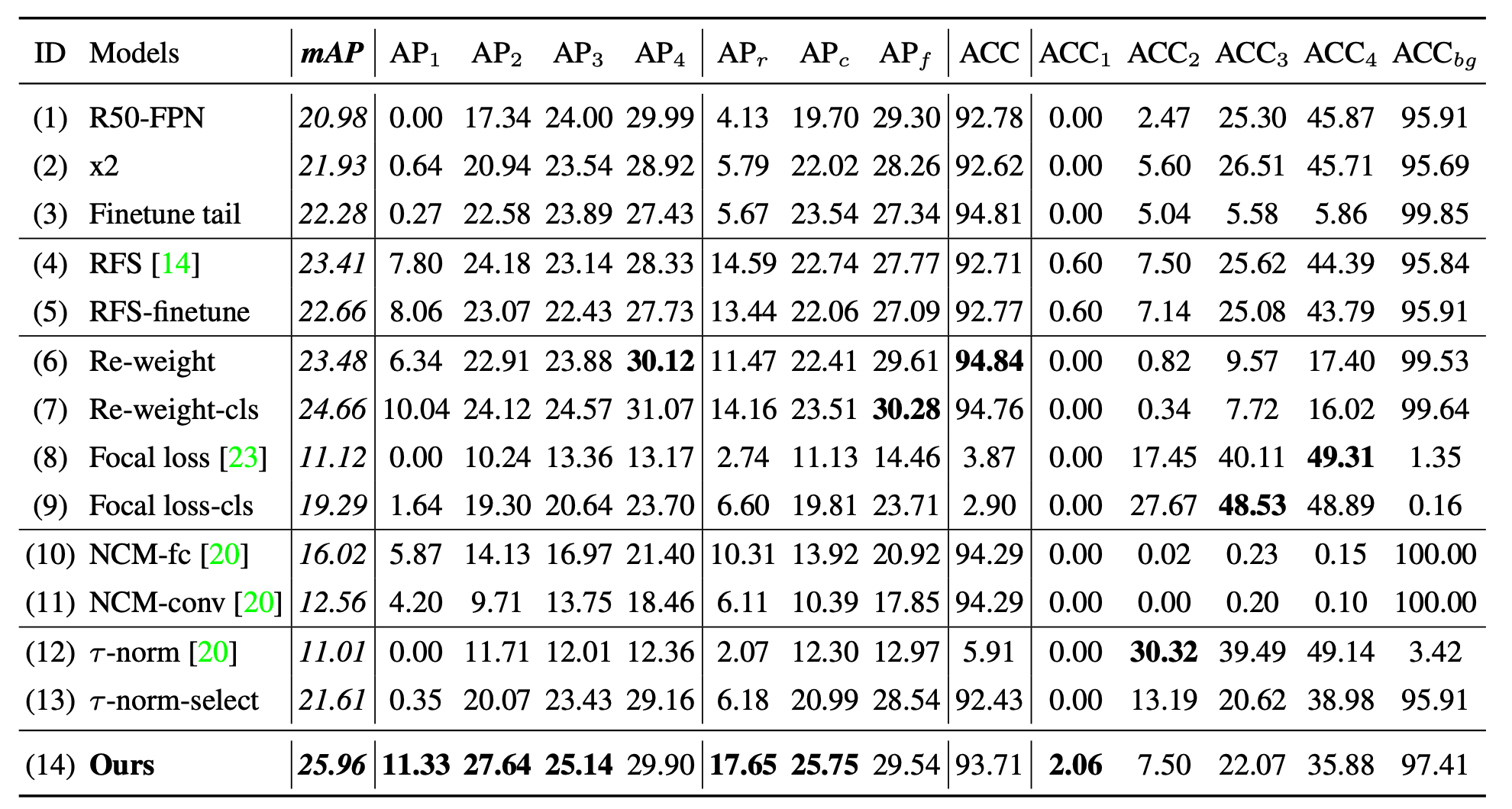
AP的下标对应着划分的组的索引,可以看到,在尾部的精度,也就是 A P 1 AP_1 AP1 和 A C C 1 ACC_1 ACC1 上都达到了SOTA的性能。
边栏推荐
- Implementation of yolov5 single image detection based on onnxruntime
- 论文tips
- Proof and understanding of pointnet principle
- 【MobileNet V3】《Searching for MobileNetV3》
- 【Cascade FPD】《Deep Convolutional Network Cascade for Facial Point Detection》
- Correction binoculaire
- 【BiSeNet】《BiSeNet:Bilateral Segmentation Network for Real-time Semantic Segmentation》
- 【Programming】
- ABM thesis translation
- 【Wing Loss】《Wing Loss for Robust Facial Landmark Localisation with Convolutional Neural Networks》
猜你喜欢
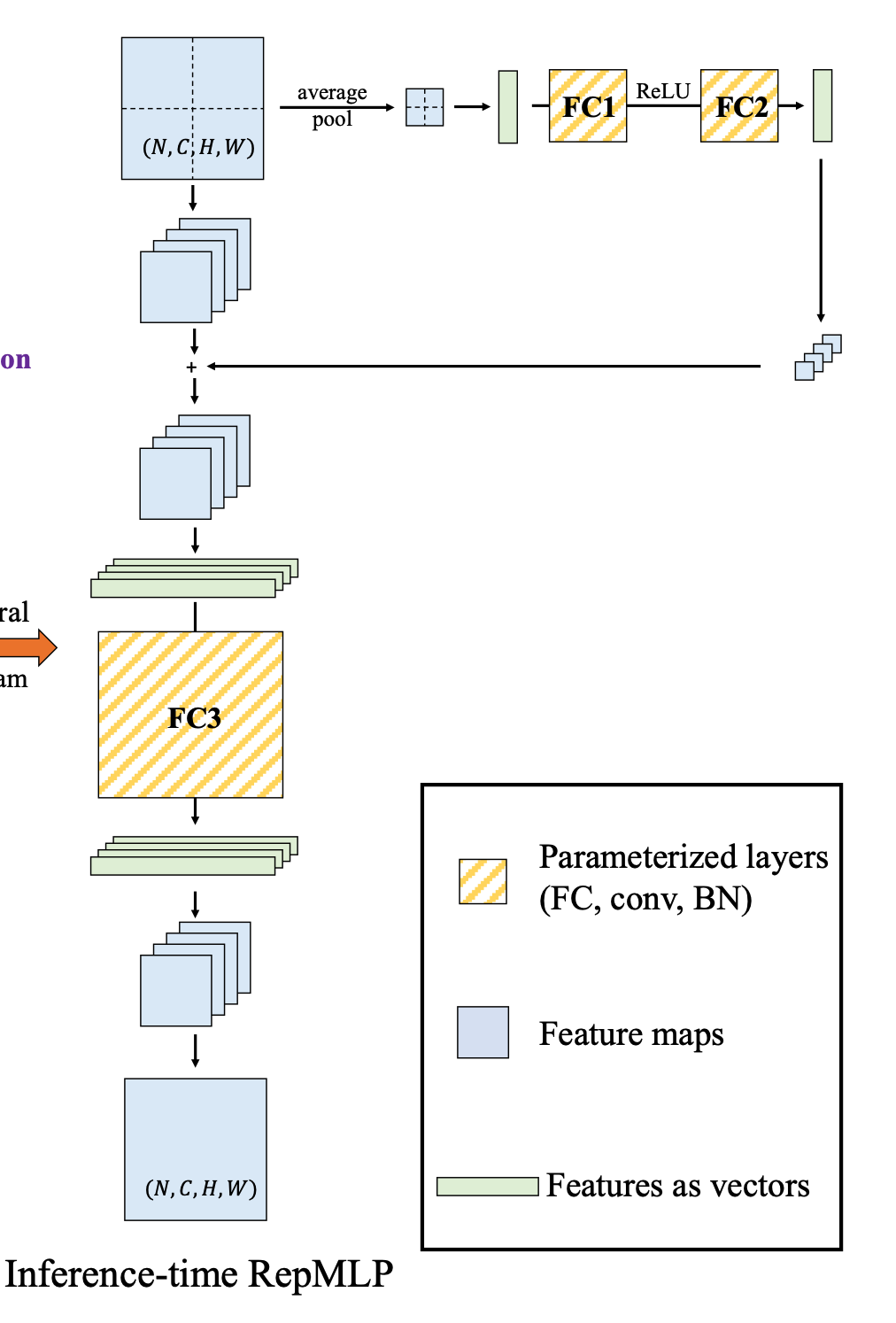
用全连接层替代掉卷积 -- RepMLP
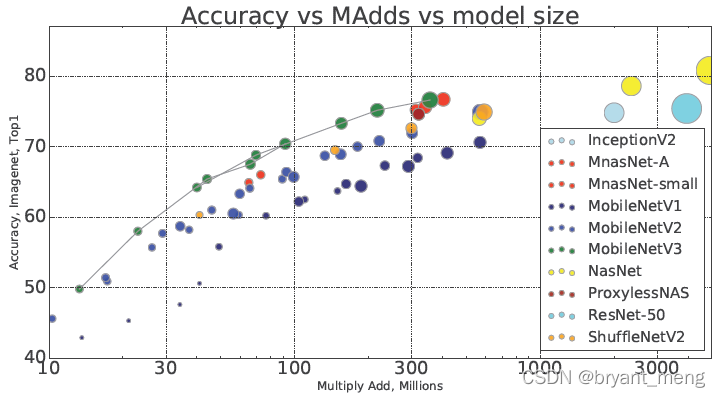
【MobileNet V3】《Searching for MobileNetV3》
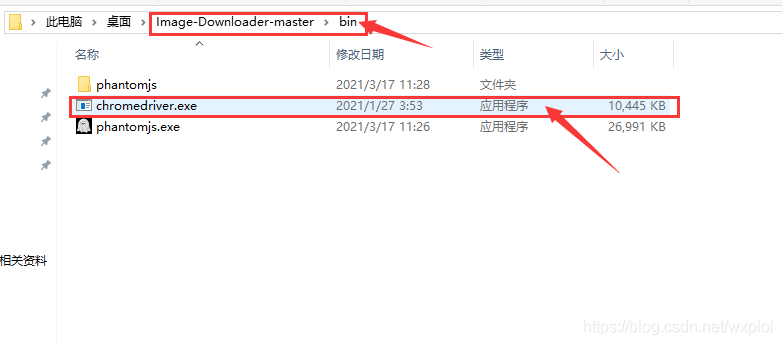
图片数据爬取工具Image-Downloader的安装和使用

Use Baidu network disk to upload data to the server

Correction binoculaire
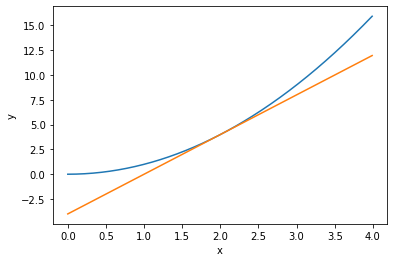
【学习笔记】反向误差传播之数值微分
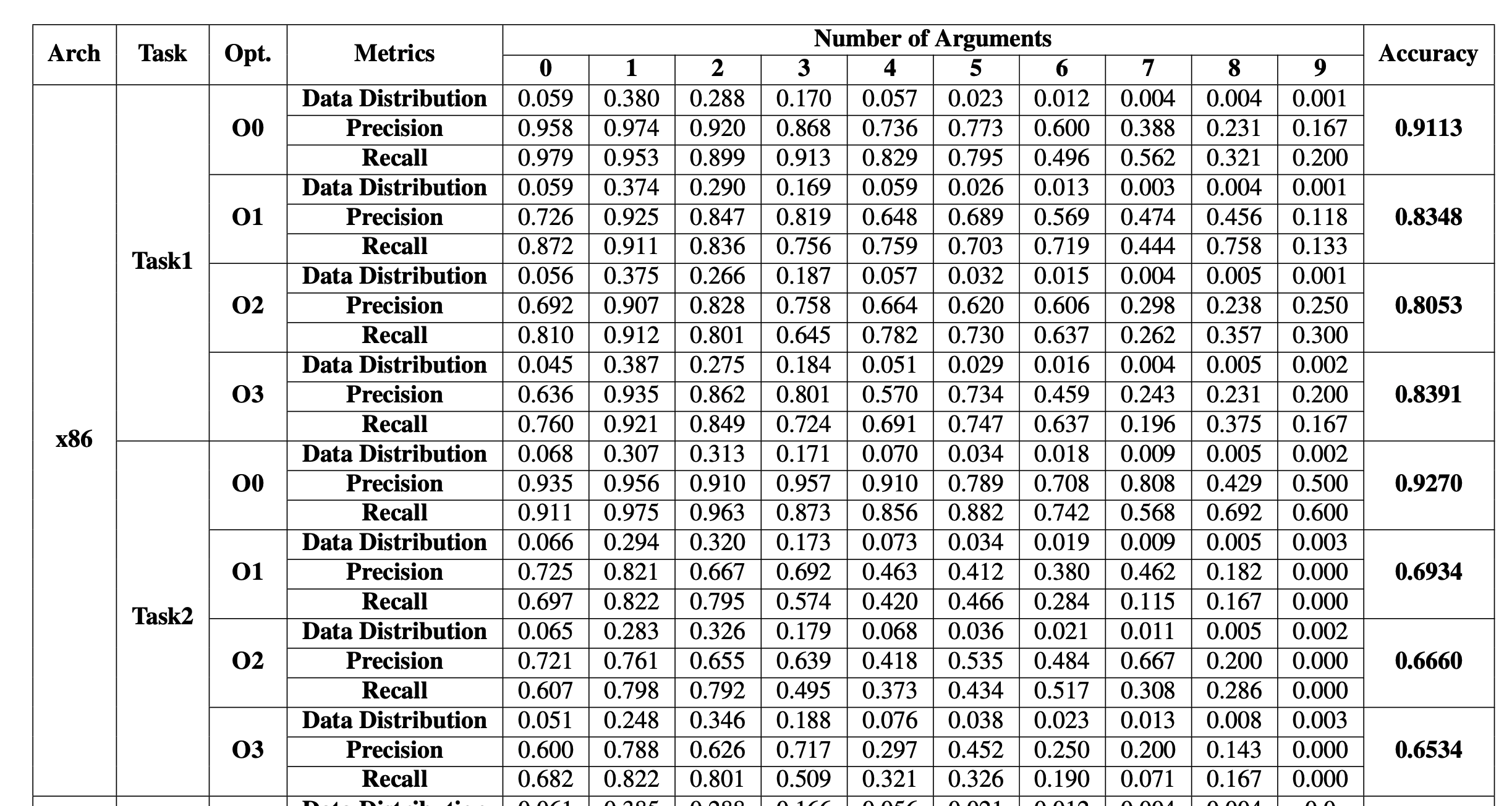
EKLAVYA -- 利用神经网络推断二进制文件中函数的参数

Nacos service registration in the interface

【Wing Loss】《Wing Loss for Robust Facial Landmark Localisation with Convolutional Neural Networks》

【DIoU】《Distance-IoU Loss:Faster and Better Learning for Bounding Box Regression》
随机推荐
【MnasNet】《MnasNet:Platform-Aware Neural Architecture Search for Mobile》
ABM thesis translation
CPU register
浅谈深度学习模型中的后门
Mmdetection model fine tuning
【MnasNet】《MnasNet:Platform-Aware Neural Architecture Search for Mobile》
mmdetection训练自己的数据集--CVAT标注文件导出coco格式及相关操作
【雙目視覺】雙目矯正
Correction binoculaire
EKLAVYA -- 利用神经网络推断二进制文件中函数的参数
What if the laptop task manager is gray and unavailable
[CVPR‘22 Oral2] TAN: Temporal Alignment Networks for Long-term Video
【TCDCN】《Facial landmark detection by deep multi-task learning》
Graph Pooling 简析
联邦学习下的数据逆向攻击 -- GradInversion
Hystrix dashboard cannot find hystrix Stream solution
win10解决IE浏览器安装不上的问题
[binocular vision] binocular correction
【Hide-and-Seek】《Hide-and-Seek: A Data Augmentation Technique for Weakly-Supervised Localization xxx》
【BiSeNet】《BiSeNet:Bilateral Segmentation Network for Real-time Semantic Segmentation》